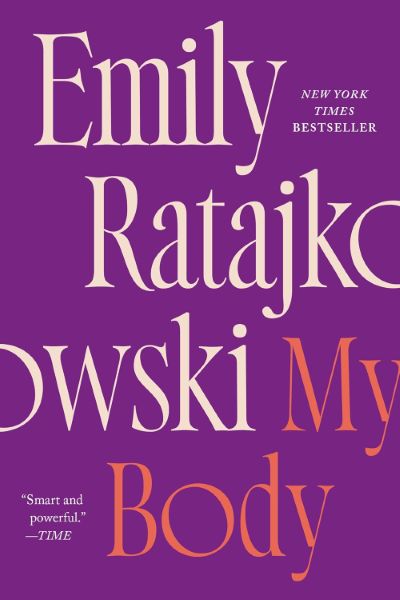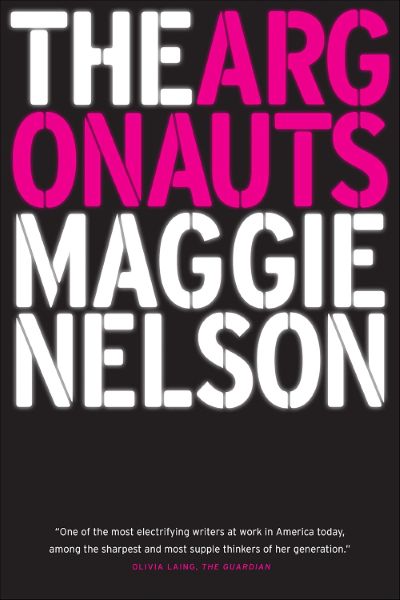My Body
A profound self-reflection from supermodel turned writer, analyzing the complex mechanisms of female body commodification through personal experience, exploring modern women's survival predicament between desire and contempt.

📝 Book Review
In the cacophony of contemporary feminist discourse, Emily Ratajkowski’s “My Body” resonates as a clear yet complex echo, offering from her unique positional voice profound reflections on body politics, the power of beauty, and female commodification. This 2021 essay collection is not merely a supermodel’s personal memoir but a sharp dissection of the entire fashion industry, popular culture, and patriarchal structures. Ratajkowski uses her lived experiences as an entry point to reveal how beauty becomes commodified within capitalist systems, and the complex reality of how women are simultaneously both beneficiaries and victims in this process.
Ratajkowski’s identity itself is full of contradictions and complexity. She rose to fame overnight in 2013 appearing in Robin Thicke’s music video “Blurred Lines,” subsequently becoming an internationally renowned model and actress. However, contrary to many stereotypical assumptions, she possesses a deep cultural background—graduating from UCLA with a degree in art history, providing her with a unique dual perspective between theoretical speculation and practical experience. This multiplicity of identity enables her to both deeply experience the internal operations of the fashion industry and engage in rational analysis through an academic lens, thus providing an extremely precious window of observation.
Structure and Central Themes
“My Body” consists of twelve interconnected essays, each developing around the complex relationships between body, power, and gender. The opening piece, “Buying Myself Back,” directly addresses the core issue: when images of women’s bodies are owned, sold, and profited from by others, how do women themselves reclaim control over their bodies? Ratajkowski reveals through describing her experience trying to purchase back nude paintings of herself how ownership and control of women’s body images have become increasingly complex and problematic in the digital age.
In the chapter “Power,” she analyzes in depth the double-edged nature of beauty as a form of power. She points out that beauty indeed provides women with certain forms of power and influence, but this power is essentially fragile and conditional. It depends on male desire and recognition, therefore remaining fundamentally a passive, other-defined form of power. This analysis breaks through simple victim-perpetrator binaries, revealing the complexity and contradictions of power relations.
Exploring the Female Gaze
One of “My Body’s” most outstanding contributions is its practical exploration of “female gaze” theory. Ratajkowski is not satisfied with simply criticizing the male gaze but attempts to redefine the meaning of the body from a female subject position. She explores how women maintain subjectivity while being objectified, how they preserve self-identity during commodification processes. This exploration has not only theoretical significance but practical value, providing frameworks for thinking for other women facing similar predicaments.
The concept of the female gaze in Ratajkowski’s work involves reclaiming agency over how women’s bodies are perceived and represented. She examines moments when she felt empowered by her sexuality and physical appearance, while simultaneously critiquing the systems that seek to profit from and control these same attributes. This nuanced approach avoids both the complete rejection of beauty and sexuality and their uncritical celebration.
Methodological Innovation in Feminist Writing
At the methodological level, this work demonstrates the important value of autobiographical writing in feminist theoretical construction. Ratajkowski uses personal narrative to make abstract theoretical concepts concrete and lived. Her writing has both theoretical depth and emotional authenticity—this combination makes complex gender theory tangible and touchable. She skillfully places personal experience within broader sociopolitical contexts, revealing deep connections between individual experience and structural problems.
This methodological approach represents a significant contribution to contemporary feminist theory, demonstrating how lived experience can serve as both the starting point for theoretical insight and its validation. Ratajkowski’s approach mirrors the feminist principle that “the personal is political” while showing how individual narratives can illuminate broader systemic issues.
Industry Critique and Systemic Exploitation
The book’s exposure of power structures within the fashion industry is particularly shocking. Ratajkowski details various forms of exploitation and abuse that models frequently encounter during shoots, from economic exploitation to sexual harassment, from deprivation of bodily autonomy to psychological manipulation. She points out that while the fashion industry superficially celebrates female beauty, it is actually built upon systematic commodification and control of women’s bodies.
This critique is not simple industry insider revelation but deep reflection on entire capitalist consumer culture. Ratajkowski connects individual experiences of exploitation to broader patterns of how women’s bodies are valued, used, and discarded within commercial contexts. She reveals how the promise of empowerment through beauty often masks relationships of exploitation and control.
Digital Culture and Body Image Circulation
In chapters analyzing body image circulation in the internet age, Ratajkowski demonstrates keen insight into digital culture. She points out that while the rise of social media provides women with more platforms for self-expression, it simultaneously intensifies the commodification process of bodies. Platforms like Instagram and OnlyFans seem to give women more control over their body images, but this control is often illusory, as platform algorithms, advertiser demands, and audience expectations still largely determine what kinds of body images receive attention and economic returns.
Her analysis of digital platforms reveals how technological innovation can simultaneously expand women’s agency while creating new forms of exploitation. The democratization of image production and distribution through social media creates opportunities for women to control their own representation, but these same platforms operate according to logics of engagement and profit that can reproduce oppressive beauty standards and commodification.
Motherhood and Intergenerational Change
Ratajkowski’s discussion of motherhood is particularly profound. After becoming a mother, she began reexamining her relationship with her body and the potential impact of body commodification on the next generation. She reflects on how to create a healthier body cognition environment for her daughter in a society that views women’s bodies as commodities. This reflection is not only personal but political, involving how to break intergenerational transmission of body shame and commodification logic.
The maternal perspective adds urgency to her critique, as she grapples with how her own choices and career may influence her daughter’s understanding of female identity and bodily autonomy. This section reveals how individual decisions about body commodification have implications beyond the individual, affecting cultural norms and expectations for future generations.
Challenging Traditional Feminist Assumptions
In terms of theoretical construction, “My Body” challenges certain assumptions of traditional feminism. Ratajkowski does not completely reject utilizing her beauty and sexuality to gain economic benefits but questions why women are always expected to feel shame in this process. She raises a complex question: in a society that has already commodified women’s bodies, can women strategically utilize this commodification for their own benefit without feeling guilty about it?
This thinking transcends simple moral judgment, entering more complex realms of ethical and political speculation. Her approach recognizes the reality that women must navigate systems not of their own making while maintaining agency within those constraints. Rather than advocating for complete withdrawal from beauty culture, she explores possibilities for critical engagement that maintains awareness of systemic problems while allowing for individual strategic choices.
Consent in Unequal Power Structures
The book’s analysis of the concept of consent is especially detailed and profound. Through describing her experiences in various shoots, Ratajkowski reveals how difficult genuine consent becomes within unequal power structures. She points out that when a young woman faces powerful male photographers, directors, or producers, her “consent” is often shaped by structural pressures. This analysis provides important theoretical frameworks for understanding many issues raised in the #MeToo movement.
Her examination of consent goes beyond simple yes-or-no frameworks to explore the contextual factors that shape decision-making. She reveals how economic pressure, professional ambition, and social expectations can compromise the ability to give truly free consent, while stopping short of removing all agency from women’s choices.
Literary Style and Accessibility
Ratajkowski’s writing style combines literary and analytical elements, making her work satisfy both general readers’ reading needs and provide valuable material for academic research. Her language is both direct and delicate, both personal and universally meaningful. She excels at using concrete scenes and details to illustrate abstract theoretical points, making complex gender theory understandable and acceptable.
The accessibility of her prose serves feminist goals by making theoretical insights available to readers who might not otherwise engage with academic feminist theory. Her ability to translate lived experience into broader social analysis demonstrates the potential for feminist theory to emerge from and speak to everyday life rather than remaining confined to academic contexts.
Position in Contemporary Feminist Theory
This work occupies a unique position in the development of contemporary feminist theory. It inherits second-wave feminism’s focus on body politics while incorporating third-wave feminism’s recognition of complexity and contradiction. Ratajkowski’s analysis forms interesting dialogue with Judith Butler’s theories on gender performativity, both focusing on the complex mechanisms of body and gender in social construction. Her practical experience also provides contemporary cases for Susan Bordo’s theories on body discipline.
Her work contributes to ongoing debates within feminist theory about agency, choice, and structural constraint. Rather than resolving these tensions, she illuminates their complexity and shows how they play out in individual lives navigating contemporary beauty culture and commercial media.
Cultural Criticism and Popular Culture
From a cultural criticism perspective, “My Body” provides in-depth deconstruction of female representation in popular culture. Ratajkowski analyzes how various cultural products she participated in—from music videos to magazine covers, from film roles to advertising images—participate in constructing and maintaining specific female stereotypes. Her analysis not only exposes power mechanisms behind these representations but also explores possibilities for finding spaces of subjectivity within these representations.
This cultural analysis reveals how individual participation in popular culture both reinforces and potentially subverts dominant narratives about femininity, sexuality, and value. Her insider perspective provides unique insights into how cultural products are created and the tensions between creative expression and commercial demands.
Global Context and Digital Age Challenges
In the context of globalization, Ratajkowski’s experiences have representative significance beyond the personal. The body commodification phenomena she describes exist not only in the fashion industry but widely across social media, advertising, entertainment, and other cultural fields. Her analysis provides important reference for understanding new challenges women face in the digital age, particularly in emerging fields like Instagram culture, influencer economy, and livestream platforms where female body commodification presents more complex and hidden forms.
The global circulation of images through digital platforms means that local experiences of commodification become part of worldwide networks of consumption and desire. Ratajkowski’s analysis helps illuminate how individual choices about self-presentation become embedded within global systems of value and exchange.
Class, Privilege, and Honest Self-Reflection
“My Body” also engages in honest reflection on class and privilege issues. Ratajkowski acknowledges that her white identity and middle-class background provided certain privileges that enable her to control her image and narrative to some degree. She also points out that even with these privileges, she still cannot completely escape control by patriarchal and capitalist systems. This honest self-reflection enhances the credibility of her critique.
Her acknowledgment of privilege serves important functions within feminist discourse by modeling how privileged women can engage in critique without claiming victim status inappropriately. This approach demonstrates accountability while maintaining analytical power, showing how intersectional analysis can inform personal reflection.
Psychological Dimensions and Mental Health
From a psychological perspective, this work deeply explores complex relationships between body shame, self-objectification, and identity formation. Ratajkowski analyzes the impact of long-term exposure to being gazed upon and judged on women’s mental health, and how to maintain healthy self-perception in such environments. Her insights provide important perspectives for understanding psychological difficulties contemporary young women face.
Her discussion of the psychological toll of commodification reveals how individual mental health connects to broader social structures. She shows how experiences of objectification can internalize as self-surveillance and self-criticism, while also exploring strategies for maintaining psychological resilience and authentic self-knowledge.
Contemporary Relevance and Social Impact
The influence of this work has transcended literary and academic fields, playing important roles in social movements and cultural change. It provides theoretical tools and emotional support for women experiencing similar predicaments, while also offering new analytical frameworks for activists committed to gender equality. It has promoted public discussion of issues like body politics, beauty standards, and female autonomy.
The book’s impact can be seen in ongoing conversations about consent, digital privacy, image ownership, and the responsibilities of platforms and industries that profit from women’s bodies. Her analysis continues to inform debates about regulation, education, and cultural change needed to address systemic commodification.
Educational Implications and Social Change
At education and social change levels, “My Body” raises important questions and suggestions. Ratajkowski calls for more comprehensive sex education and media literacy education to help young people better understand and cope with commodified body culture. She also advocates for strengthened legal protection of digital image rights to prevent malicious distribution and commercial exploitation of women’s body images.
Her educational vision emphasizes critical thinking about beauty culture, media representation, and economic systems that profit from women’s insecurities and desires. This educational approach aims to create more informed consumers and participants in beauty culture who can navigate these systems with greater awareness and agency.
Conclusion: Complexity, Agency, and Ongoing Struggle
Today, “My Body” remains an important text for understanding contemporary body politics and gender relations. Against the backdrop of TikTok, Instagram, and other visual social media continuing to shape young people’s body cognition, Ratajkowski’s insights and critiques seem increasingly important. Her work reminds us that genuine bodily autonomy means not only freedom of choice but also making choices without influence from structural oppression.
This work provides important insights for thinking about how to maintain human dignity and autonomy in commodified culture, representing an indispensable contribution to contemporary feminist theory and cultural criticism. Ratajkowski’s achievement lies in her ability to articulate the complex realities of living within systems of commodification while maintaining critical perspective and advocating for greater agency and awareness.
Her work demonstrates that feminist politics in the twenty-first century must grapple with unprecedented forms of commodification, surveillance, and control while also recognizing new possibilities for agency, resistance, and solidarity. “My Body” serves as both a critical analysis of contemporary beauty culture and a testament to the possibility of living consciously and critically within imperfect systems, always working toward greater justice and autonomy for all women.
Discussion
读书讨论
分享您对这本书的感想和看法,与其他读者交流见解
加入讨论
分享您对这本书的感想和看法,与其他读者交流见解
加载评论中...
Book Info
Related Topics
🛒 Get This Book
 Buy on Amazon
Buy on Amazon Related Books
读书讨论
分享您对这本书的感想和看法,与其他读者交流见解
加入讨论
分享您对这本书的感想和看法,与其他读者交流见解
加载评论中...

